#AI-enabled POS system
Explore tagged Tumblr posts
Text
AI-Enabled POS System for Restaurants | Boost Efficiency & Accuracy
Discover AI-enabled POS systems for restaurants that enhance order accuracy, streamline operations, and optimize customer service. Leverage intelligent technology for improved performance and profitability.
0 notes
Text
AI-Enabled POS System
The restaurant industry is continually evolving, with technology playing a pivotal role in enhancing operations, improving customer experience, and driving profitability. One of the most innovative advancements in recent years is the introduction of AI-enabled Point of Sale (POS) systems. This cutting-edge technology is transforming how restaurants manage their operations, interact with customers, and make data-driven decisions.
What is an AI-Enabled POS System?
An AI-enabled POS system integrates artificial intelligence into the traditional point of sale, offering restaurants enhanced functionality beyond standard order processing and payment collection. By leveraging AI, these systems can automate tasks, analyze large sets of data, and provide actionable insights to optimize operations.
Benefits of AI in Point of Sale Systems
1. Personalized Customer Experience
With AI-enabled POS systems, restaurants can offer a highly personalized experience. By analyzing customer behavior and preferences, AI can recommend menu items based on previous orders or suggest upsells and cross-sells that are likely to appeal to each customer. This not only boosts sales but also improves customer satisfaction and loyalty.
2. Advanced Inventory Management
Managing inventory can be a time-consuming task for restaurant owners. However, an AI-powered POS system can predict inventory needs based on historical sales data, upcoming reservations, and even external factors like weather forecasts. This ensures that the restaurant always has the right amount of stock, reducing waste and preventing shortages.
3. Data-Driven Insights
One of the most significant advantages of an AI-enabled POS system is its ability to analyze data and generate real-time reports. Restaurant owners can monitor sales trends, identify peak hours, and track the performance of specific menu items. These insights allow for informed decision-making, such as adjusting pricing strategies or creating targeted promotions.
4. Efficient Labor Management
AI can optimize labor scheduling by predicting busy times and adjusting staffing needs accordingly. This ensures that restaurants are never overstaffed or understaffed, improving efficiency and reducing labor costs. Additionally, AI can analyze employee performance data to identify areas for improvement and suggest training opportunities.
5. Faster Order Processing
A POS with AI streamlines order processing by automating various tasks, such as processing payments, sending orders directly to the kitchen display system (KDS), and handling online and in-store orders simultaneously. This reduces wait times and increases table turnover, boosting overall efficiency.
Why Choose eatOS AI-Enabled POS?
At eatOS, our AI-enabled POS system offers a comprehensive solution tailored to meet the unique needs of the restaurant industry. Designed for Quick-Service and Full-Service Restaurants, our AI-powered POS helps you automate repetitive tasks, optimize operations, and enhance the customer experience.
Some of the standout features of eatOS AI-POS include:
Menu Optimization: Automatically analyze sales trends and customer preferences to make data-driven decisions about menu design and item availability.
Smart Inventory: Predicts stock needs and automatically alerts you when it’s time to reorder, minimizing waste and improving supply chain management.
AI-Driven Analytics: Receive real-time insights on sales, labor, and inventory data, empowering you to make informed decisions that impact your bottom line.
Conclusion
As the restaurant industry becomes more competitive, integrating an AI-enabled POS system is a crucial step for restaurants looking to stay ahead. Whether you’re aiming to streamline operations, enhance the customer experience, or maximize profitability, AI-driven technology offers endless possibilities.
0 notes
Text
#ai enabled restaurant management#restaurant pos system#online ordering system#restaurant point of sale#self service kiosk#full service restaurant#restaurant management software#quick service pos system#restaurant pos software#kitchen display system#restaurant management ecosystem
0 notes
Text
Culinary Commerce: The Role of AI-Enabled Restaurants in Sales

Technology is playing a more and larger role in the constantly changing fabric of the culinary world, profoundly influencing our culinary adventures. The rise of culinary establishments with AI integration represents a ground-breaking and paradigm-shifting development in this field. These eating establishments use artificial intelligence's ability to advance both financial feats and the culinary the journey. In this essay, we set out on a fascinating journey into the universe of AI Enabled Restaurant and try to understand their enormous impact on the food industry.
Enhanced Cooking Skills in the Kitchen
The conduits in the kitchen are being carefully optimized by AI while being hidden from customers' sight. It ensures the most cost-effective use of the ingredients, avoiding waste. AI-driven kitchen automata manage the production of food with an unparalleled level of accuracy, consistency, and speed, hence reducing the length of time that customers must wait. This promptness not only results in cost-efficiency for the restaurant but also in the happiness of the customers.
Restaurants with AI-Enhanced Business Models
Revenue Maximization Using Data-Driven Cognition
Data is king in the world of food commerce. The power of data analytics can be utilized by restaurants with AI to gain profound understanding into customer behavior. They are more equipped to make intelligent decisions about pricing, menu changes, and marketing strategies since they can recognize the apex of dining traffic, beloved menu items, and seasonal vogues. This data-driven strategy helps restaurants increase sales and financial benefits since they are adept at making adjustments that are laser-focused on successfully meeting the needs of their customers.
Enhancing Patron Adherence
The ability to cultivate strong customer loyalty is one of the restaurants using AI as their main asset. Customers are more likely to return to the restaurant because of its cozy atmosphere of personalized menus and sleek service. AI also has the ability to provide specific customers personalized promos and incentives based on their preferences, thereby strengthening the relationship between the business and its customers. AI-assisted restaurants increase brand loyalty and contribute to the steady increase in financial entrance by creating an environment of exclusivity and attending to the unique needs of each customer
The Human Dimension
While AI is a crucial part of these organizations' successes, the importance of human interaction should not be underestimated. Staff who are friendly and attentive continue to be the foundation of any successful restaurant. AI just supports their efforts by optimizing processes and improving the eating experience.
The Future Route
AI-infused dining establishments are expected to spread further as the landscape of culinary commerce continues its continuous evolution. Customers are becoming more interested in dining experiences that offer them not only delicious meals but also a streamlined, tailored experience that meets their needs. It is projected that this development will increase AI's involvement in the restaurant industry.
In conclusion
AI-enhanced dining experiences with quick service POS system and represent a seismic shift in the culinary industry, redefining the eating experience while increasing efficiency and financial gain. These businesses are without a doubt ready to meet the constantly changing needs of the smart modern diner thanks to their use of artificial intelligence.
#Ai enabled restaurant#quick service POS system#restaurant management system#restaurant management software#restaurant management ecosystem#kitchen display system#kds system#full service restaurant#restaurant pos system#online ordering system#restaurant point of sale
0 notes
Text
The Future of ERP Software in India: Trends to Watch in 2024
As India continues to solidify its position as a global economic powerhouse, the demand for sophisticated Enterprise Resource Planning (ERP) solutions has never been higher. ERP software companies in India are at the forefront of this transformation, driving innovation and efficiency across various industries. As we look ahead to 2024, several key trends are shaping the future of ERP software in India. This blog delves into these trends, offering insights into how ERP software providers in India are gearing up to meet the evolving needs of businesses.
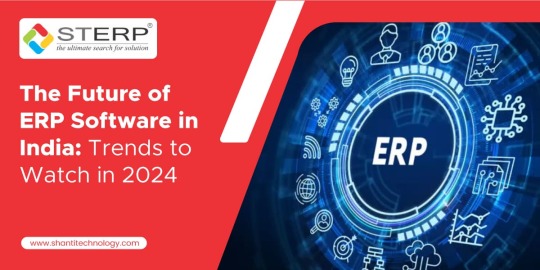
1. Increased Adoption of Cloud-Based ERP Solutions
One of the most significant trends in the ERP landscape is the shift towards cloud-based solutions. ERP software companies in India are increasingly offering cloud-based ERP systems to meet the growing demand for flexibility, scalability, and cost-efficiency. Cloud ERP solutions eliminate the need for extensive on-premises infrastructure, allowing businesses to reduce capital expenditure and streamline operations.
Cloud-based ERP systems also facilitate real-time data access and collaboration, enabling businesses to make informed decisions quickly. This trend is particularly beneficial for small and medium-sized enterprises (SMEs) that require affordable and scalable ERP solutions to compete effectively in the market.
2. Integration of Artificial Intelligence and Machine Learning
Artificial Intelligence (AI) and Machine Learning (ML) are revolutionizing the ERP landscape. ERP software providers in India are integrating AI and ML technologies to enhance the capabilities of their solutions. These technologies enable predictive analytics, automate routine tasks, and provide intelligent insights, helping businesses to optimize their operations.
For instance, AI-powered ERP systems can forecast demand, manage inventory levels, and predict maintenance needs, significantly improving efficiency and reducing costs. As AI and ML technologies continue to evolve, their integration into ERP systems will become more sophisticated, offering even greater value to businesses.
3. Focus on Industry-Specific ERP Solutions
ERP software companies in India are increasingly developing industry-specific ERP solutions to cater to the unique needs of different sectors. Whether it is manufacturing, retail, healthcare, or finance, each industry has distinct requirements that generic ERP systems might not fully address. Industry-specific ERP solutions offer tailored functionalities and workflows, ensuring better alignment with business processes.
For example, a manufacturing ERP system might include features for production planning, quality control, and supply chain management, while a retail ERP system could focus on inventory management, point of sale (POS) integration, and customer relationship management (CRM). This trend towards specialization ensures that businesses can leverage ERP systems that truly support their operational needs.
4. Enhanced Mobile Accessibility
With the proliferation of smartphones and mobile devices, the need for mobile-friendly ERP solutions is growing. ERP software providers in India are developing mobile applications that allow users to access critical business information on the go. Mobile ERP solutions enable employees to perform tasks such as inventory checks, sales order processing, and expense reporting from their smartphones or tablets.
This trend not only improves accessibility but also enhances productivity by enabling employees to work remotely and make decisions in real-time. As mobile technology continues to advance, the functionality and user experience of mobile ERP applications will improve, making them an indispensable tool for modern businesses.
5. Increased Emphasis on Data Security and Compliance
As businesses become more reliant on digital technologies, data security and compliance have become paramount. ERP software providers in India are prioritizing data protection by incorporating advanced security features into their solutions. This includes encryption, multi-factor authentication, and regular security audits to safeguard sensitive business information.
Moreover, with the implementation of regulations such as the General Data Protection Regulation (GDPR) and India’s Personal Data Protection Bill, compliance is a critical concern for businesses. ERP software providers are ensuring that their systems comply with these regulations, helping businesses avoid legal penalties and build trust with their customers.
6. Rise of Hybrid ERP Solutions
While cloud-based ERP systems offer numerous advantages, some businesses prefer on-premises solutions due to specific regulatory or operational requirements. To cater to these diverse needs, ERP software companies in India are offering hybrid ERP solutions that combine the benefits of both cloud and on-premises systems.
Hybrid ERP solutions provide the flexibility of cloud-based systems while allowing businesses to maintain critical applications on-premises. This approach offers a balanced solution, enabling businesses to optimize their IT infrastructure based on their unique needs and preferences.
7. Adoption of Advanced Analytics and Business Intelligence
Data is the new currency in today’s business environment, and the ability to harness and analyze data is a key competitive advantage. ERP software providers in India are integrating advanced analytics and business intelligence (BI) tools into their systems. These tools enable businesses to gain deep insights into their operations, identify trends, and make data-driven decisions.
Advanced analytics and BI tools can analyze large volumes of data from various sources, providing comprehensive reports and dashboards. This helps businesses to monitor performance, identify inefficiencies, and uncover new opportunities for growth.
8. Greater Focus on User Experience and Interface Design
The user experience (UX) and interface design of ERP systems are critical to their adoption and effectiveness. ERP software companies in India are placing a greater emphasis on developing intuitive and user-friendly interfaces. This trend is driven by the need to ensure that ERP systems are accessible and easy to use for all employees, regardless of their technical expertise.
Modern ERP systems feature clean, responsive interfaces with customizable dashboards and navigation options. This focus on UX design helps to improve user satisfaction, reduce training time, and increase overall productivity.
9. Integration with the Internet of Things (IoT)
The Internet of Things (IoT) is transforming the way businesses operate by enabling real-time monitoring and data collection from connected devices. ERP software providers in India are integrating IoT capabilities into their systems to enhance operational efficiency and decision-making.
IoT-enabled ERP systems can monitor equipment performance, track inventory levels, and optimize supply chain operations. For example, sensors placed on manufacturing equipment can detect anomalies and trigger maintenance requests before a breakdown occurs. This integration of IoT with ERP systems allows businesses to leverage real-time data for proactive management and improved efficiency.
10. Sustainable and Green ERP Solutions
Sustainability is becoming a key consideration for businesses across industries. ERP software companies in India are developing solutions that support sustainable practices and environmental responsibility. Green ERP solutions help businesses to monitor and reduce their environmental impact by tracking energy consumption, waste management, and resource utilization.
By integrating sustainability metrics into their ERP systems, businesses can set and achieve environmental goals, comply with regulations, and enhance their corporate social responsibility (CSR) initiatives. This trend towards sustainable ERP solutions reflects the growing importance of environmental stewardship in today’s business landscape.
Conclusion
The future of ERP software in India is marked by innovation, adaptability, and a deep understanding of the unique needs of businesses. ERP software providers in India are leading the charge, offering solutions that are not only technologically advanced but also aligned with the evolving demands of the market. As we move into 2024, the trends highlighted in this blog will play a crucial role in shaping the ERP landscape, driving efficiency, and fostering growth across industries.
ERP software providers in India are well-positioned to support businesses in their digital transformation journeys, providing the tools and insights needed to thrive in a competitive environment. By staying ahead of these trends, businesses can leverage ERP solutions to achieve operational excellence and sustainable growth.
#ERP software Companies in India#ERP software providers in India#ERP software company in India#ERP software in India#ERP solution provider#ERP software#ERP system#cloud ERP#ERP solutions
4 notes
·
View notes
Text
Natural Language Processing (NLP) and its Advancements
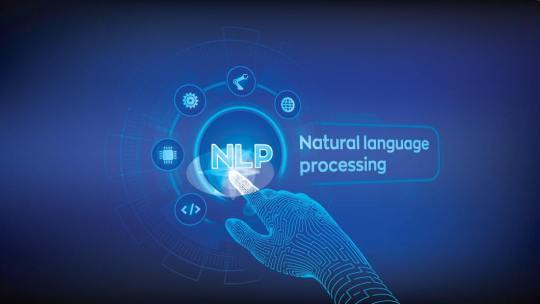
Introduction
Natural Language Processing (NLP) is a branch of artificial intelligence that focuses on the interaction between computers and human language. It aims to enable machines to understand, interpret, and generate natural language, bridging the gap between human communication and computational systems. In this article, we will explore the concept of NLP and discuss its advancements and applications.
Understanding Natural Language Processing (NLP)
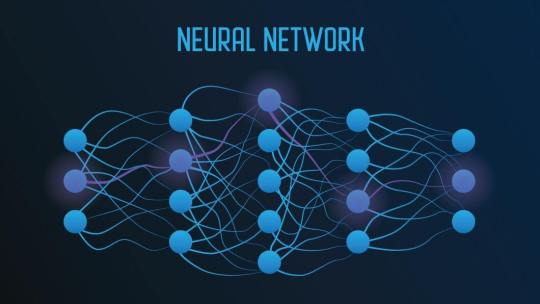
Definition of NLP:
NLP involves the development of algorithms and models that enable computers to process and understand human language. It encompasses a range of tasks, including speech recognition, language understanding, sentiment analysis, machine translation, and text generation.
Key Components of NLP:
NLP involves several key components:
Tokenization: Breaking down text into individual words, phrases, or sentences.
Part-of-Speech (POS) Tagging: Assigning grammatical tags to each word in a sentence.
Named Entity Recognition (NER): Identifying and classifying named entities, such as names, locations, and organizations.
Parsing: Analyzing the grammatical structure of a sentence.
Sentiment Analysis: Determining the sentiment or emotion expressed in a text.
Machine Translation: Translating text from one language to another.
Text Generation: Creating human-like text based on given prompts or contexts.
Advancements in Natural Language Processing (NLP)
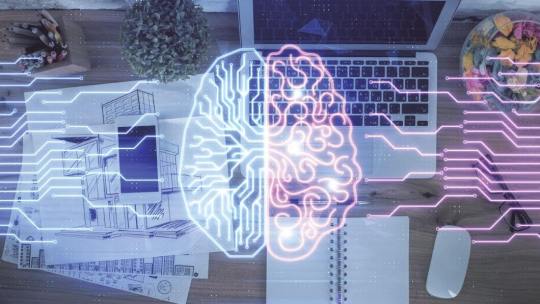
Deep Learning and Neural Networks:Advancements in deep learning and neural networks have significantly contributed to the progress of NLP. Deep learning models, such as recurrent neural networks (RNNs) and transformer models like BERT and GPT, have achieved remarkable results in various NLP tasks. These models can learn complex patterns and dependencies in language data, improving accuracy and performance.
Pretrained Language Models:Pretrained language models have emerged as a game-changer in NLP. Models like BERT (Bidirectional Encoder Representations from Transformers) and GPT (Generative Pretrained Transformer) are pretrained on large amounts of text data and can be fine-tuned for specific tasks. They have shown remarkable capabilities in tasks like question-answering, text completion, and sentiment analysis.
Multilingual NLP:With the global nature of communication, multilingual NLP has gained importance. Researchers have developed models that can handle multiple languages simultaneously, allowing for cross-lingual tasks like machine translation, sentiment analysis, and information retrieval. These advancements are fostering communication and understanding across language barriers.
Contextual Understanding:NLP models are becoming better at understanding the context and nuances of language. Contextual embeddings, such as ELMo and BERT, capture the meaning of a word based on its surrounding words, leading to more accurate and context-aware language understanding. This advancement has improved tasks like question-answering and language generation.
Domain-Specific NLP Applications:NLP is being applied to various industry-specific domains. In healthcare, NLP helps in extracting information from medical records, aiding in diagnosis and treatment. In finance, NLP assists in sentiment analysis for trading decisions and fraud detection. In customer service, chatbots powered by NLP enable efficient and personalized interactions. These domain-specific applications are enhancing productivity and decision-making.
Future Directions of NLP

Explainable AI: One of the ongoing challenges in NLP is the lack of transparency and interpretability of models. Future research aims to develop techniques that provide explanations for the decisions made by NLP models, enabling users to understand the reasoning behind the system’s outputs. This will be particularly crucial in sensitive domains where accountability and trust are paramount.
Emotion and Context Recognition: Advancing NLP models to recognize and understand human emotions and contextual cues will enable more nuanced and personalized interactions. Emotion recognition can be useful in chatbots, virtual assistants, and mental health applications. Context recognition will allow systems to adapt their responses based on the user’s situation, leading to more meaningful and relevant interactions.
Ethical Considerations: As NLP becomes more pervasive, it is essential to address ethical considerations. This includes ensuring fairness and mitigating biases in NLP models, protecting user privacy, and establishing guidelines for responsible use of NLP technologies. Ongoing research and collaboration are necessary to develop ethical frameworks and standards that govern the development and deployment of NLP systems.
Cross-Modal NLP: Cross-modal NLP involves integrating multiple modalities, such as text, images, and audio, to achieve a deeper understanding of human communication. This field aims to develop models that can effectively process and interpret information from different modalities, enabling more comprehensive and multimodal interactions.
Continual Learning:Continual learning in NLP focuses on the ability of models to adapt and learn from new data continuously. This is crucial in dynamic environments where language evolves and new concepts emerge. Future NLP systems will be designed to learn incrementally, improving their performance over time and adapting to changing linguistic patterns.
Conclusion
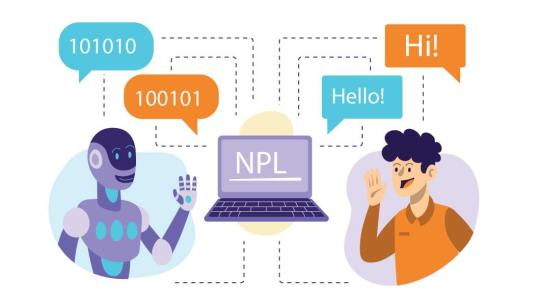
Natural Language Processing has witnessed significant advancements, thanks to developments in deep learning, pretrained models, multilingual capabilities, contextual understanding, and domain-specific applications. These advancements are driving progress in language understanding, sentiment analysis, translation, and text generation. As NLP continues to evolve, we can expect further breakthroughs that will enhance the interaction between humans and machines, making natural language processing more seamless and intuitive.
The advancements in natural language processing have revolutionized the way we interact with computers and machines. From deep learning models to pretrained language models and multilingual capabilities, NLP has made significant progress in understanding and generating human language. Future directions include explainable AI, emotion and context recognition, ethical considerations, cross-modal NLP, and continual learning. As NLP continues to evolve, we can expect more sophisticated language understanding, improved user experiences, and new applications across various industries.
FAQs
FAQ 1: What are some real-world applications of Natural Language Processing (NLP)?
NLP has numerous real-world applications across various domains. Some examples include:
Virtual assistants like Siri and Alexa that understand and respond to spoken commands.
Text analysis tools used in sentiment analysis for understanding customer feedback.
Machine translation services like Google Translate that enable communication across different languages.
Chatbots and customer support systems that provide automated responses to user inquiries.
Information retrieval systems that extract relevant information from large text corpora.
FAQ 2: How does NLP handle different languages and dialects?
NLP research and development focus on handling multiple languages and dialects. Pretrained models like BERT and GPT can be fine-tuned for specific languages. Additionally, language-specific resources like lexicons and grammatical rules are created to support language processing. However, the availability and quality of NLP tools and resources may vary across languages.
FAQ 3: How does NLP deal with understanding the context of words and phrases?
NLP models leverage contextual embeddings and deep learning techniques to understand the context of words and phrases. Models like BERT encode the meaning of a word based on its surrounding words, capturing contextual information. This allows the models to grasp the nuances and multiple meanings of words in different contexts, improving language understanding.
FAQ 4: What challenges does NLP face in understanding human language?
NLP still faces several challenges in understanding human language. Some of these challenges include:
Ambiguity: Words and phrases often have multiple meanings, making it challenging to determine the intended sense in a given context.
Idioms and figurative language: NLP models may struggle to interpret idiomatic expressions, metaphors, or sarcasm.
Out-of-vocabulary words: NLP models may encounter words or phrases that they haven’t seen during training, leading to difficulties in understanding.
Cultural and domain-specific references: NLP models may struggle to comprehend references that are specific to a particular culture or domain.
FAQ 5: How can NLP be used for information extraction from unstructured text?
NLP techniques, such as named entity recognition and relationship extraction, are employed to extract structured information from unstructured text. Named entity recognition identifies and classifies named entities like names, locations, and organizations. Relationship extraction identifies connections between entities. These techniques enable the extraction of valuable information from large volumes of text, aiding in tasks like data mining and knowledge discovery.
2 notes
·
View notes
Text
Liquor Store ID Scanner: Enhance Compliance, Prevent Fraud & Boost Efficiency
In today's regulatory environment, liquor store owners face significant challenges in ensuring compliance with age verification laws. The sale of alcohol to minors not only jeopardizes public safety but also puts businesses at risk of severe penalties, including hefty fines and the potential loss of their liquor licenses. To mitigate these risks, many establishments are turning to advanced solutions like liquor store ID scanners.
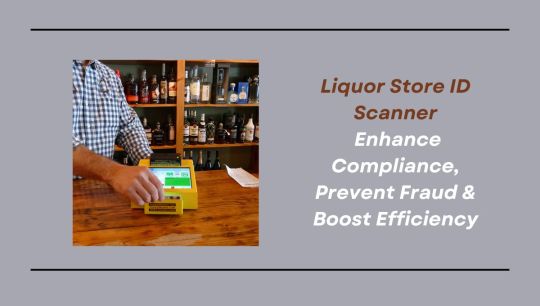
Understanding Liquor Store ID Scanners
A liquor store ID scanner is a specialized device designed to authenticate identification documents swiftly and accurately. These scanners read data from various forms of IDs, such as driver's licenses and passports, to verify the age and identity of customers. By automating the verification process, these devices reduce human error and enhance operational efficiency.
Key Benefits of Implementing ID Scanners
Regulatory Compliance: Ensuring that alcohol sales are restricted to individuals of legal drinking age is paramount. ID scanners provide real-time verification, helping businesses adhere to state and federal regulations and avoid costly violations.
Fraud Prevention: With the proliferation of sophisticated fake IDs, manual inspection can be unreliable. Advanced ID scanners utilize technologies like hologram analysis, ultraviolet and infrared scanning, and cross-referencing with governmental databases to detect counterfeit identifications effectively. For instance, FTx Identity's platform offers AI-based tools that analyze IDs for authenticity, significantly reducing the risk of accepting fraudulent documents.
Operational Efficiency: Manual age verification can be time-consuming, leading to longer checkout lines and decreased customer satisfaction. ID scanners expedite the process, allowing for quicker transactions and improved service quality. Devices like the AgeVisor™ Touch are designed for rapid and reliable age validation, streamlining operations in high-traffic environments.
Data Management and Analytics: Modern ID scanners often come equipped with software that logs transaction data. This feature enables store owners to monitor compliance, track customer demographics, and identify purchasing patterns, which can inform marketing strategies and inventory management.
Addressing Privacy Concerns
While the benefits are clear, some customers may have reservations about the data captured during ID scans. It's essential for businesses to communicate transparently about their data handling practices. Reputable ID scanning solutions prioritize user privacy, ensuring that personal information is not stored unnecessarily or shared without consent. For example, FTx Identity allows customers to create digital IDs within their app, protecting personal data by limiting storage and providing proof of verification without exposing sensitive information.
Selecting the Right ID Scanner for Your Business
When choosing an ID scanner, consider the following factors:
Compatibility: Ensure the scanner integrates seamlessly with your existing point-of-sale (POS) systems. Many solutions offer APIs and SDKs for easy integration.
Document Support: Opt for scanners capable of reading a wide range of identification forms, including various state-issued IDs and passports.
Authentication Features: Advanced features like biometric authentication, hologram inspection, and AI-based verification enhance the scanner's ability to detect fraudulent IDs.
User Experience: Devices should be user-friendly, with intuitive interfaces that require minimal training for staff.
Data Security: Prioritize solutions that emphasize data protection, ensuring customer information remains confidential and complies with relevant privacy laws.
Future Trends in Age Verification
The landscape of age verification is continually evolving. Emerging technologies, such as digital IDs and mobile verification apps, are gaining traction. For instance, in the UK, new legislation is set to allow shoppers to verify their age through a government-approved app, reducing the need for physical IDs and expediting the purchasing process.
By staying abreast of these developments and integrating modern ID verification solutions, liquor store owners can not only ensure compliance and reduce liability but also enhance the overall customer experience. Investing in a reliable liquor store ID scanner is a proactive step toward safeguarding your business and fostering a responsible retail environment
0 notes
Text
Streamline Salon Transactions: The Power of Checkouts in Salon Software
Introduction
In today’s fast-paced salon and spa industry, efficiency is everything. While offering top-tier services is crucial, ensuring a smooth and hassle-free checkout experience is just as important. Clients expect seamless transactions that allow them to pay quickly and conveniently without unnecessary delays.

This is where Salon Software with an advanced checkout feature becomes a game-changer. A robust Salon Management Software helps salon owners streamline payments, enhance customer experience, and improve revenue tracking.
In this blog, we’ll explore the benefits of the checkout feature in Salon Software, its latest trends, and how MioSalon empowers businesses with an efficient point-of-sale system.
Why an Efficient Checkout Process is Essential for Salons & Spas
1. Enhances Customer Satisfaction
Nobody likes waiting in long queues to make a payment. A Salon Booking Software with a quick checkout process ensures a frictionless client experience.
2. Reduces Billing Errors
Manual billing often leads to miscalculations, pricing discrepancies, or missed services. An automated spa booking software eliminates errors, ensuring accurate billing every time.
3. Supports Multiple Payment Modes
Modern customers prefer flexible payment options, including credit/debit cards, digital wallets, and even BNPL (Buy Now, Pay Later) services. A spa management software that integrates various payment methods improves client convenience.
4. Improves Revenue Management
With a digital Salon Appointment Software, salon owners can track daily earnings, monitor transactions, and analyze financial reports effortlessly.
5. Encourages Upselling & Cross-Selling
A well-integrated checkout system in spa software allows salon staff to recommend additional services or retail products at the time of billing, increasing revenue potential.
Key Benefits of the Checkouts Feature in Salon Software
1. Fast & Hassle-Free Billing
A streamlined checkout process eliminates long wait times, ensuring a smooth payment experience.
Latest Trend: Contactless Payments & Digital Wallets
With digital transactions on the rise, modern Salon Software integrates contactless payments, QR code scanning, and mobile wallets for faster checkouts.
2. Integrated POS System for a Seamless Experience
A robust Salon Management Software includes an integrated Point of Sale (POS) system, allowing salons to process payments, track earnings, and manage customer purchases in one place.
Latest Trend: Cloud-Based POS for Real-Time Access
Salon owners are increasingly opting for cloud-based POS systems, enabling them to monitor sales, payments, and transactions remotely.
3. Automated Discounts & Membership Rewards
Salon Booking Software with an intelligent checkout system automatically applies discounts, memberships, and loyalty points during billing.
Latest Trend: AI-Driven Personalized Discounts
AI-powered spa software analyzes client spending habits and offers personalized discounts, enhancing customer retention.
4. Multiple Payment Options for Convenience
A spa booking software with a diverse payment gateway integration ensures that customers can pay using:
Credit/Debit Cards
Digital Wallets (Google Pay, Apple Pay, PayPal)
Buy Now, Pay Later (BNPL) Services
Cash or Salon Gift Cards
Latest Trend: Cryptocurrency & Digital Payment Integration
Some modern Salon Scheduling Software now offer cryptocurrency payment options, catering to tech-savvy customers.
5. Split Payments & Partial Billing
With an advanced spa scheduling software, salons can allow customers to split their payments across multiple modes, enhancing flexibility.
Latest Trend: Subscription-Based Payments for Salon Services
Salon memberships and subscription plans are gaining traction, allowing clients to pay a fixed amount monthly for services.
6. Upselling & Cross-Selling Made Easy
An intelligent checkout feature suggests relevant services or retail products based on the client’s past bookings, increasing sales opportunities.
Latest Trend: AI-Powered Product Recommendations
AI-enabled spa management software analyzes a client’s purchase history and recommends personalized products at checkout.
7. Digital Invoices & Paperless Billing
With a smart Salon Appointment Software, customers receive digital invoices via SMS or email, eliminating the need for paper receipts.
Latest Trend: E-Receipts with Embedded Feedback Links
Salons now send digital receipts that include feedback links, encouraging clients to leave reviews post-checkout.
8. Real-Time Financial Reporting & Analytics
A Salon Management Software provides real-time reports on revenue, daily transactions, and sales performance, allowing salon owners to make informed decisions.
Latest Trend: AI-Based Revenue Forecasting
AI-powered spa software predicts future earnings based on historical data, helping salons strategize better.
Why MioSalon is the Best Choice for an Advanced Checkout System
When it comes to Salon Software, MioSalon stands out as one of the most reliable solutions for salon businesses. Here’s why:
✅ Lightning-Fast Checkouts – MioSalon ensures quick and seamless billing to reduce client wait times. ✅ Integrated POS System – Manage transactions, staff commissions, and product sales in one place. ✅ Automated Loyalty & Discounts – Easily apply discounts, memberships, and loyalty points. ✅ Multiple Payment Gateways – Accept credit cards, digital wallets, and split payments hassle-free. ✅ Smart Upselling & Cross-Selling – AI-driven product and service recommendations boost revenue. ✅ Cloud-Based Access – View reports and monitor transactions anytime, anywhere.
With MioSalon’s Salon Management Software, salons can take their checkout experience to the next level.
Conclusion
An efficient checkout feature in Salon Software is no longer a luxury—it’s a necessity. From fast and seamless billing to AI-driven recommendations, the latest trends in spa software are transforming how salons handle transactions.
By investing in MioSalon’s Spa Management Software, salon owners can ensure a smooth checkout process, drive higher revenue, and enhance customer satisfaction.
Ready to Upgrade Your Salon’s Checkout System? Request a Demo of MioSalon Today!
0 notes
Text
5 Proven Ways POS Systems for Retail Boost Clothing Sales
Are you experiencing a decline in clothing sales? The fashion industry is facing unprecedented challenges, and staying ahead in this volatile market requires innovative strategies. According to McKinsey’s State of Fashion 2025 report, economic uncertainty, geographic disparities, and evolving customer behaviors make growth a complex challenge for fashion retailers.
The key to overcoming these challenges lies in personalization. Modern POS Systems for Retail go beyond transactions; they create unique and tailored shopping experiences that enhance customer engagement and drive sales.
For fashion retailers aiming to thrive, investing in the right retail solution for fashion stores is crucial. Here’s how POS technology, specifically designed for POS for Fashion Retail Stores, can revolutionize the shopping experience and boost sales.
1. Drive Sales with Personalized Promotions
Generic marketing emails are often ignored, but tailored promotions can capture customer interest. In fact, 72% of consumers only engage with marketing messages that are personalized to their preferences (SmarterHQ).
POS Systems for Retail enable retailers to create targeted promotions using CRM data. By analyzing shopping history, preferences, and purchase behavior, retailers can deliver highly relevant offers that drive sales. Veras Reach, a powerful CRM solution, helps businesses boost campaign response rates with dynamic, data-driven promotions.
2. Enhance Visual Merchandising with Curated Collections
Fashion is visual, and retailers must leverage this to their advantage. Customers are more likely to engage with brands that offer curated product selections based on their preferences. Visual commerce plays a key role, especially for younger shoppers who rely on mobile visual searches (eMarketer).
POS for Fashion Retail Stores now integrates AI-powered tools to create personalized lookbooks. Veras Style Builder empowers store associates to curate apparel collections tailored to individual tastes, improving customer engagement and increasing sales.
3. Faster Checkouts for a Seamless Shopping Experience
Long checkout lines can deter shoppers, with 82% of customers avoiding stores due to anticipated wait times (Waitwhile 2023). A slow checkout process leads to frustration and lost sales.
Mobile POS Systems for Retail eliminate checkout bottlenecks by allowing associates to process transactions anywhere in the store. This enhances convenience and personalization while improving operational efficiency. Solutions like Veras Checkout and Extend provide a seamless checkout experience, reducing wait times and improving customer satisfaction.
4. Strengthen Brand Presence with Omnichannel Integration
Customers expect a seamless shopping experience across all touchpoints, whether in-store, online, or on social media. According to Salesforce’s State of the Connected Customer report, 79% of shoppers expect consistent brand interactions across all channels.
POS for Fashion Retail Stores ensures synchronization between CRM systems and marketing platforms, delivering a unified shopping experience. Veras Black Book helps retailers amplify brand messaging, execute omnichannel campaigns, and strengthen customer connections across multiple platforms.
5. Leverage Clienteling for Deeper Customer Relationships
Today’s fashion-conscious shoppers seek personalized styling recommendations and expert guidance. Clienteling allows retailers to build strong, one-on-one customer relationships by providing tailored product suggestions and styling advice.
POS Systems for Retail equipped with AI-powered clienteling features help fashion associates track customer preferences and deliver highly personalized shopping experiences. Veras Affinity simplifies this process, allowing associates to offer customized style insights and outfit recommendations, ultimately driving loyalty and increasing sales.
Elevate Your Retail Strategy with Veras Retail
If your clothing sales are declining, adopting a retail solution for fashion stores that prioritizes personalization is the key to success. The right POS Systems for Retail can transform shopper engagement, enhance brand loyalty, and drive revenue growth.
Veras Retail provides cutting-edge solutions that go beyond traditional point-of-sale systems, empowering fashion retailers to deliver exceptional, personalized shopping experiences.
Request a Veras Retail Demo Today to Experience the Future of Personalized Retail.
FAQs
1. What ROI can fashion retailers expect from personalized POS systems? Personalized POS Systems for Retail increase ROI by optimizing marketing spend, improving engagement, enhancing customer loyalty, and driving higher order values.
2. How much training do store associates need to use POS systems effectively? Modern POS for Fashion Retail Stores is user-friendly. Minimal training is required to utilize features such as CRM access, clienteling tools, and mobile POS functions.
3. How can retailers ensure data privacy when using personalized POS solutions? Retailers should choose POS Systems for Retail with robust security features, comply with data privacy regulations, and ensure transparency in data usage policies.
4. Can Veras Retail’s POS integrate with existing retail software? Yes. Veras Retail’s API-driven platform seamlessly integrates with CRM, ERP, and other retail management solutions, ensuring a connected and efficient retail ecosystem.
0 notes
Text
Unlocking Business Efficiency with ERP SAP Business One: The Ultimate Guide
In today’s fast-paced business environment, organizations are constantly searching for ways to streamline operations, improve productivity, and enhance decision-making. ERP SAP Business One has emerged as a leading solution for small and mid-sized enterprises (SMEs) looking to integrate various business processes into a single, unified system. As SAP B1 ERP in India continues to gain traction, businesses are leveraging its powerful features to optimize their workflow and drive growth. Moreover, SAP Business One Addon solutions have further enhanced the software’s capabilities by providing industry-specific customizations.
This blog will explore why ERP SAP Business One is the ideal choice for businesses in India, its key benefits, and how SAP Business One Addons can further optimize business performance.
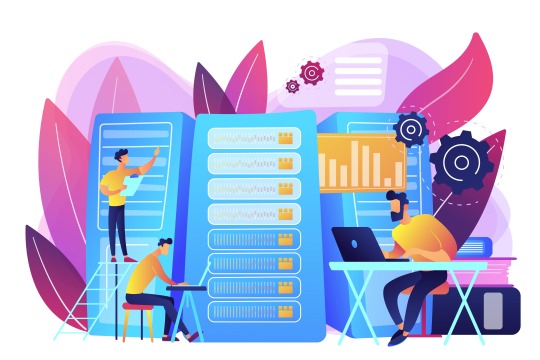
Why Businesses in India Choose SAP Business One ERP
SAP Business One ERP is designed to meet the unique challenges faced by Indian businesses. With its ability to manage financials, sales, customer relationships, and inventory in one integrated solution, SAP B1 enables businesses to achieve operational excellence. Here are some of the reasons why businesses in India are increasingly opting for SAP B1 ERP in India:
1. Cost-Effective ERP Solution
Unlike traditional ERP systems that require large-scale infrastructure and high upfront costs, ERP SAP B1 is an affordable solution that delivers enterprise-grade functionality to SMEs.
2. Comprehensive Business Integration
SAP Business One consolidates key business functions such as accounting, supply chain management, human resources, and sales, allowing seamless data flow and better collaboration between departments.
3. Regulatory Compliance and GST Integration
With India’s evolving tax regulations, businesses must ensure compliance with GST and other statutory requirements. SAP Business One ERP in India comes with built-in tax calculation features, making compliance effortless.
4. Scalability for Growing Businesses
As businesses expand, they require an ERP system that can grow with them. SAP Business One offers scalability, enabling organizations to add new users, functionalities, and locations with ease.
5. Cloud and On-Premise Deployment Options
Businesses can choose between cloud-based or on-premise deployment depending on their specific needs, offering flexibility and cost-effectiveness.
Key Features of ERP SAP Business One
SAP Business One is equipped with robust features that help businesses achieve digital transformation. Some of its key features include:
1. Financial Management
Automated financial processes
Real-time analytics and reporting
Multi-currency support
2. Sales and Customer Relationship Management (CRM)
Lead and opportunity tracking
Order processing automation
Customer data integration
3. Inventory and Supply Chain Management
Stock tracking and warehouse management
Demand forecasting and procurement planning
Real-time inventory visibility
4. Business Intelligence & Reporting
Customizable dashboards and reports
AI-driven insights for better decision-making
Integration with third-party analytics tools
5. Production and Project Management
Bill of materials (BOM) handling
Work order management
Project costing and resource planning
Enhancing ERP SAP Business One with SAP Business One Addon Solutions
While SAP B1 ERP in India offers a robust set of features, businesses often require additional customizations to cater to their specific industry needs. This is where SAP Business One Add-on solutions come into play. These add-ons extend the core functionalities of SAP B1, making it even more efficient for industry-specific applications.
Popular SAP Business One Addons
1. Manufacturing Addon
This addon enhances production planning and shop floor management, helping manufacturers streamline operations and reduce downtime.
2. Retail and POS Addon
Retail businesses can benefit from features like multi-store management, loyalty programs, and real-time sales tracking.
3. E-commerce Integration Addon
This addon allows seamless integration with platforms like Shopify, WooCommerce, and Magento, ensuring a smooth online sales process.
4. HR and Payroll Addon
For businesses that require advanced human resource management, this addon helps with employee records, payroll processing, and leave management.
5. Third-Party API Integration Addon
Businesses that rely on multiple applications can integrate third-party APIs with SAP Business One, ensuring seamless data synchronization.
Future Trends of SAP Business One ERP in India
As technology evolves, so does ERP SAP Business One. Here are some emerging trends in SAP Business One that will shape the future of ERP in India:
1. AI-Powered Automation
Artificial Intelligence (AI) and Machine Learning (ML) are transforming ERP systems by automating repetitive tasks, improving decision-making, and predicting market trends.
2. Internet of Things (IoT) Integration
IoT-enabled SAP Business One solutions provide real-time data on inventory, equipment performance, and logistics, optimizing operational efficiency.
3. Enhanced Cybersecurity Measures
With increasing cyber threats, SAP Business One is incorporating advanced security protocols to protect business-critical data.
4. Mobile ERP Solutions
Mobile access to ERP systems is becoming a necessity, allowing businesses to manage operations anytime, anywhere.
5. Cloud-Based SAP Business One Solutions
Cloud deployment is gaining popularity, providing cost-effective, scalable, and flexible ERP solutions for businesses of all sizes.
Conclusion
ERP SAP B1 has revolutionized the way businesses in India operate by offering a unified platform for financial management, inventory control, CRM, and more. With the growing demand for SAP Business One ERP in India, organizations are reaping the benefits of digital transformation and improved efficiency. Additionally, solutions provide businesses with tailored functionalities to meet their specific industry requirements.
As Indian businesses continue to grow and adapt to market changes, adopting SAP Business One ERP with the right add-ons will be key to staying competitive. If you are looking for a powerful ERP solution that can scale with your business, SAP Business One is the ideal choice.
Are you ready to take your business to the next level with SAP Business One? Get in touch with an authorized SAP partner today and explore how ERP SAP Business One can transform your business!
0 notes
Text
AI-Enabled POS Systems | Revolutionize Your Business Operations
Discover the power of AI-enabled POS systems. Automate tasks, optimize inventory, enhance customer experiences, and gain valuable insights to drive smarter decisions for your business.
0 notes
Text
AI-Enabled POS: Revolutionizing the Restaurant Experience
In the fast-paced world of restaurants, staying ahead of customer expectations is key. Modern solutions like an AI-enabled POS are transforming how restaurants operate, blending advanced technology with seamless functionality. The eatOS Point of Sale system stands out as a powerful, innovative solution that integrates artificial intelligence to elevate operations, improve efficiency, and enhance customer satisfaction.

What is an AI-Enabled POS?
An AI-enabled POS combines traditional point-of-sale functionality with the power of artificial intelligence. This intelligent system processes data in real time to help businesses make smarter decisions, automate tasks, and deliver a personalized experience for every customer. From predictive analytics to efficient inventory management, AI takes POS systems to the next level.
Key Benefits of AI-Enabled POS Systems
Enhanced Customer Experience AI-driven features, such as personalized recommendations and faster order processing, create a seamless dining experience. Customers benefit from tailored menus, quick service, and multiple payment options, all supported by advanced AI capabilities.
Streamlined Operations For restaurant owners, an AI-enabled POS offers automated processes that reduce manual work. Tasks like tracking inventory, managing employee schedules, and analyzing sales trends become effortless with an AI-powered system.
Real-Time Insights With built-in analytics, the eatOS AI-enabled POS provides real-time insights into sales, customer preferences, and operational performance. Restaurants can use these insights to make data-driven decisions and stay competitive in the market.
Cost Savings By reducing human error and optimizing processes, AI-driven POS systems help cut costs. Smart inventory management ensures minimal wastage, while predictive analytics identify peak business hours, helping staff efficiently.
Why Choose eatOS for Your AI-Enabled POS?
The eatOS Point of Sale system is designed to meet the unique needs of modern restaurants. It integrates seamlessly with other tools like kiosks, online ordering platforms, and mobile devices. The AI technology behind eatOS enables restaurants to operate smarter, serve faster, and improve profitability.
Whether you manage a bustling café or a fine-dining restaurant, the eatOS AI-enabled POS offers the tools to take your business to the next level.
0 notes
Text
#restaurant management software#restaurant pos system#restaurant pos software#restaurant point of sale#restaurant point of sale systems#ai in restaurants#ai pos system#ai enabled restaurant management
0 notes
Text
Use cases like integrating sales data from multiple sources.
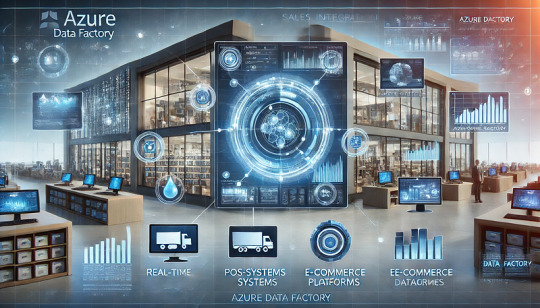
Retailers often collect sales data from various sources, including point-of-sale (POS) systems, e-commerce platforms, third-party marketplaces, and ERP systems.
Azure Data Factory (ADF) enables seamless integration of this data for unified reporting, analytics, and business insights. Below are key use cases where ADF plays a crucial role:
1. Omnichannel Sales Data Integration
Scenario: A retailer operates physical stores, an online website, and sells on third-party marketplaces (Amazon, eBay, Shopify). Data from these sources need to be unified for accurate sales reporting.
✅ ADF Solution:
Extracts sales data from POS systems, e-commerce APIs, and ERP databases.
Loads data into a centralized data warehouse (Azure Synapse Analytics).
Enables real-time updates for tracking product performance across all channels.
🔹 Business Impact: Unified sales tracking across online and offline channels for better decision-making.
2. Real-Time Sales Analytics for Demand Forecasting
Scenario: A supermarket chain wants to predict demand by analyzing real-time sales trends across different locations.
✅ ADF Solution:
Uses Event-Based Triggers to process real-time sales transactions.
Connects to Azure Stream Analytics to generate demand forecasts.
Feeds insights into Power BI for managers to adjust inventory accordingly.
🔹 Business Impact: Reduced stockouts and overstocking, improving revenue and operational efficiency.
3. Sales Performance Analysis Across Regions
Scenario: A multinational retailer needs to compare sales performance across different countries and regions.
✅ ADF Solution:
Extracts regional sales data from distributed SQL databases.
Standardizes currency, tax, and pricing variations using Mapping Data Flows.
Aggregates data in Azure Data Lake for advanced reporting.
🔹 Business Impact: Enables regional managers to compare performance and optimize sales strategies.
4. Personalized Customer Insights for Marketing
Scenario: A fashion retailer wants to personalize promotions based on customer purchase behavior.
✅ ADF Solution:
Merges purchase history from CRM, website, and loyalty programs.
Applies AI/ML models in Azure Machine Learning to segment customers.
Sends targeted promotions via Azure Logic Apps and Email Services.
🔹 Business Impact: Higher customer engagement and improved sales conversion rates.
5. Fraud Detection in Sales Transactions
Scenario: A financial services retailer wants to detect fraudulent transactions based on unusual sales patterns.
✅ ADF Solution:
Ingests transaction data from multiple sources (credit card, mobile wallets, POS).
Applies anomaly detection models using Azure Synapse + ML algorithms.
Alerts security teams in real-time via Azure Functions.
🔹 Business Impact: Prevents fraudulent activities and financial losses.
6. Supplier Sales Reconciliation & Returns Management
Scenario: A retailer needs to reconcile sales data with supplier shipments and manage product returns efficiently.
✅ ADF Solution:
Integrates sales, purchase orders, and supplier shipment data.
Uses Data Flows to match sales records with supplier invoices.
Automates refund and restocking workflows using Azure Logic Apps.
🔹 Business Impact: Improves supplier relationships and streamlines return processes.
Conclusion
Azure Data Factory enables retailers to integrate, clean, and process sales data from multiple sources, driving insights and automation. Whether it’s demand forecasting, fraud detection, or customer personalization, ADF helps retailers make data-driven decisions and enhance efficiency.
WEBSITE: https://www.ficusoft.in/azure-data-factory-training-in-chennai/
0 notes
Text
Point of Sale Display Market Trends, Forecast & Regional Insights
Introduction:
The retail industry is evolving, and businesses are constantly looking for innovative ways to attract customers and influence purchasing decisions. Point of Sale (POS) Displays have become a crucial tool for retailers, allowing them to highlight promotional offers, provide product details, and create engaging in-store experiences. These displays come in various forms, including digital screens, shelf-edge displays, freestanding kiosks, and countertop units, all designed to capture customer attention at the point of purchase.
Point of Sale (POS) Display Market is experiencing significant growth due to increasing demand for digital signage, enhanced customer engagement strategies, and advancements in display technology. The adoption of interactive and AI-powered POS displays is further driving market expansion, as businesses aim to personalize shopping experiences and improve brand visibility. The market is set to grow as retailers, restaurants, and convenience stores continue to integrate these solutions into their marketing strategies.
Market Trends:
Growing Adoption of Digital POS Displays – Retailers are shifting from traditional signage to digital displays for dynamic and real-time content updates.
Rising Demand in Supermarkets and Hypermarkets – Large retail chains are extensively using POS displays to promote in-store offers and new products.
Integration of AI and IoT – AI-powered displays can analyze customer behavior and provide personalized promotions, while IoT connectivity enhances remote content management.
Sustainability and Eco-friendly Displays – The market is seeing a rise in demand for energy-efficient and recyclable POS displays.
Increased Use in the Hospitality Sector – Restaurants and cafes are leveraging POS displays for digital menus, promotions, and customer engagement.
Growth Drivers & Challenges:
Growth Drivers:
Increasing focus on in-store customer engagement and marketing.
Rising demand for interactive and touch-enabled POS displays.
Advancements in display technology, including OLED and e-paper.
Expansion of retail and e-commerce industries, driving demand for physical store enhancements.
Cost-effectiveness of POS displays compared to traditional advertising channels.
Challenges:
Despite the market's rapid expansion, challenges remain. The high initial investment in digital POS displays, along with maintenance and software integration costs, can deter small retailers from adopting the technology. Additionally, competition from online advertising and e-commerce platforms poses a challenge, as digital marketing strategies continue to evolve. Security concerns related to data privacy, especially in AI-integrated POS systems, also present hurdles for widespread adoption.
Future Outlook:
The Point of Sale (POS) Display Market is expected to grow steadily as retailers and businesses increasingly focus on enhancing in-store customer engagement. The integration of AI, IoT, and cloud-based content management systems will drive innovation in this sector. Additionally, advancements in eco-friendly materials and energy-efficient displays will align with sustainability goals, further boosting market adoption. Emerging markets, particularly in Asia-Pacific and Latin America, will witness significant growth due to rising retail sector investments and increasing consumer demand for interactive shopping experiences.
Conclusion:
The Point of Sale (POS) Display Market is poised for significant growth, driven by technological advancements and the increasing need for effective in-store marketing strategies. While challenges such as high costs and competition from digital advertising exist, the market’s future remains promising. Businesses that leverage smart, interactive, and engaging POS display solutions will gain a competitive edge by enhancing customer experiences and boosting sales.
Read More Insights @ https://www.snsinsider.com/reports/point-of-sale-display-market-4693
Contact Us:
Akash Anand – Head of Business Development & Strategy
Phone: +1-415-230-0044 (US) | +91-7798602273 (IND)
0 notes
Text
Why Your Restaurant Needs an Online Food Ordering Management System?

Restaurants need to adapt to changing customer expectations. An Online Food Ordering Management System is no longer just an option—it’s a necessity for businesses that want to stay competitive, improve efficiency, and increase revenue. This article explores how such systems benefit restaurants, streamline operations, and enhance the overall customer experience.
What is an Online Food Ordering Management System?
An Online Food Ordering Management System is a technology-driven platform that enables restaurants to manage customer orders, streamline delivery, and optimize operations. It allows users to browse menus, place orders, make payments, and track deliveries—all from a mobile app or website.
Key Benefits of an Online Food Ordering System
1. Seamless Order Management
Handling multiple orders manually can be chaotic. With an automated system, restaurants can manage in-house, takeaway, and delivery orders efficiently. It minimizes human errors and ensures smooth operations.
2. Real-Time Order Tracking
Customers want to know where their food is. An advanced system provides live order tracking, keeping customers informed and reducing inquiries about delivery status.
3. Multiple Payment Options
Offering diverse payment methods—credit/debit cards, PayPal, and digital wallets—enhances customer convenience and increases order completion rates.
4. POS Integration for Smoother Operations
Integrating with a Point of Sale (POS) system syncs online and offline sales, making inventory and financial tracking easier.
5. Multi-Restaurant Management
For restaurant chains or cloud kitchens, a centralized dashboard simplifies managing multiple outlets from one place, streamlining workflow and decision-making.
6. Automated Order Notifications
Keep customers and staff updated with instant notifications via email, SMS, or in-app alerts, reducing confusion and improving efficiency.
7. Customizable Discounts & Promotions
Increase customer retention with discounts, promo codes, and loyalty programs. A good system allows easy customization of offers and real-time tracking of promotions.
8. Delivery & Pickup Options
Cater to all customer preferences with multiple fulfillment options, including in-house dining, takeout, and home delivery.
9. Customer Reviews & Ratings
Build credibility by allowing customers to leave reviews and ratings, helping new customers trust your brand while giving you insights for improvement.
Why Every Restaurant Need an Online Ordering System?
Increased Revenue: Digital orders lead to higher average order values compared to in-person orders.
Better Customer Experience: Convenience, speed, and order accuracy enhance customer satisfaction.
Reduced Operational Costs: Automating order management reduces labor costs and minimizes errors.
Improved Brand Visibility: Online ordering platforms enhance marketing opportunities through SEO and social media integrations.
How to Choose the Right Online Food Ordering System?
When selecting a system, consider factors like:
✔️ User-friendly interface
✔️ Mobile compatibility
✔️ Secure payment gateways
✔️ Integration with third-party delivery services
✔️ Scalability for future expansion
✔️ SEO optimization for better online visibility
How does Online Food Ordering Impact Customer Behavior?
With the rise of online ordering, customer behavior has significantly shifted:
Higher Expectations: Customers expect faster delivery times and real-time updates.
Preference for Contactless Transactions: Many prefer digital payments and contactless deliveries.
Loyalty to Convenient Services: Restaurants with seamless ordering experiences see repeat business.
Increased Demand for Customization: Customers love options like extra toppings, special requests, and dietary preferences.
Future Trends in Online Food Ordering
The food industry continues to evolve with emerging trends:
AI-Powered Recommendations: AI-driven ordering systems suggest dishes based on customer preferences.
Voice-Activated Ordering: Smart assistants like Alexa and Google Assistant streamline the ordering process.
Drone & Robot Deliveries: Innovative delivery methods are being tested to enhance speed and efficiency.
Sustainability Focus: Restaurants are adopting eco-friendly packaging and sustainable food sourcing.
Final Thoughts
An Online Food Ordering Management System is a game-changer for restaurants looking to thrive in the digital age. Whether you run a small café, a multi-restaurant chain, or a cloud kitchen, investing in the right system can drive sales, improve efficiency, and keep your customers happy.
Ready to transform your restaurant business? Start leveraging the power of an Online Food Ordering Management System today!
#ordering#onlinefriends#foodknowledge#onlinerelationship#internetfriendsneeded#onlinemarketer#food#online#onlinebusiness#freehomedelivery#homedeliveryavailable#grocerydelivery#studyspanishonline#onlinespanishclasses#onlinefriendship#internetbestfriends#onlinefriendgoals#internetbestfriendsmeeting#internetbestfriend#foodlover#indianstore#foodphotography#bestrestaurantsinsatna#onlinecoaching#groceriesshopping#surpriceyourlovedones#groceryoutlet#grocerycart#internetfriendsgoal#bestie
0 notes